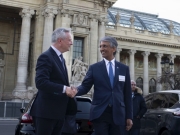Economics Terms
Economics
The study of how to work with given resources.
Home Economics
The study of how housewives work with limited money in a small apartment, hungry husband, naughty kids, limited salt, eggs, oil and rice.
Demand
What people want
Supply
What is being produced
Demand & Supply
What people want and what is being produced
Equilibrium
What people want and what is being produced match, at a certain price.
GDP
The total value of goods or services created. It stands for Gross Domestic Product.
Nominal
Current value or market value
Real
Value adjusted for inflation
Inflation
Value or price going up
Deflation
Value or price going down
Macroeconomics
When your mum gives you $200 a month or $2400 a year, you decide how to spend it.
Microeconomics
You spend $2 today. Count the cents and dollars to know what you have spend this month or this year.
Econometrics
Using complex math to explain economics














